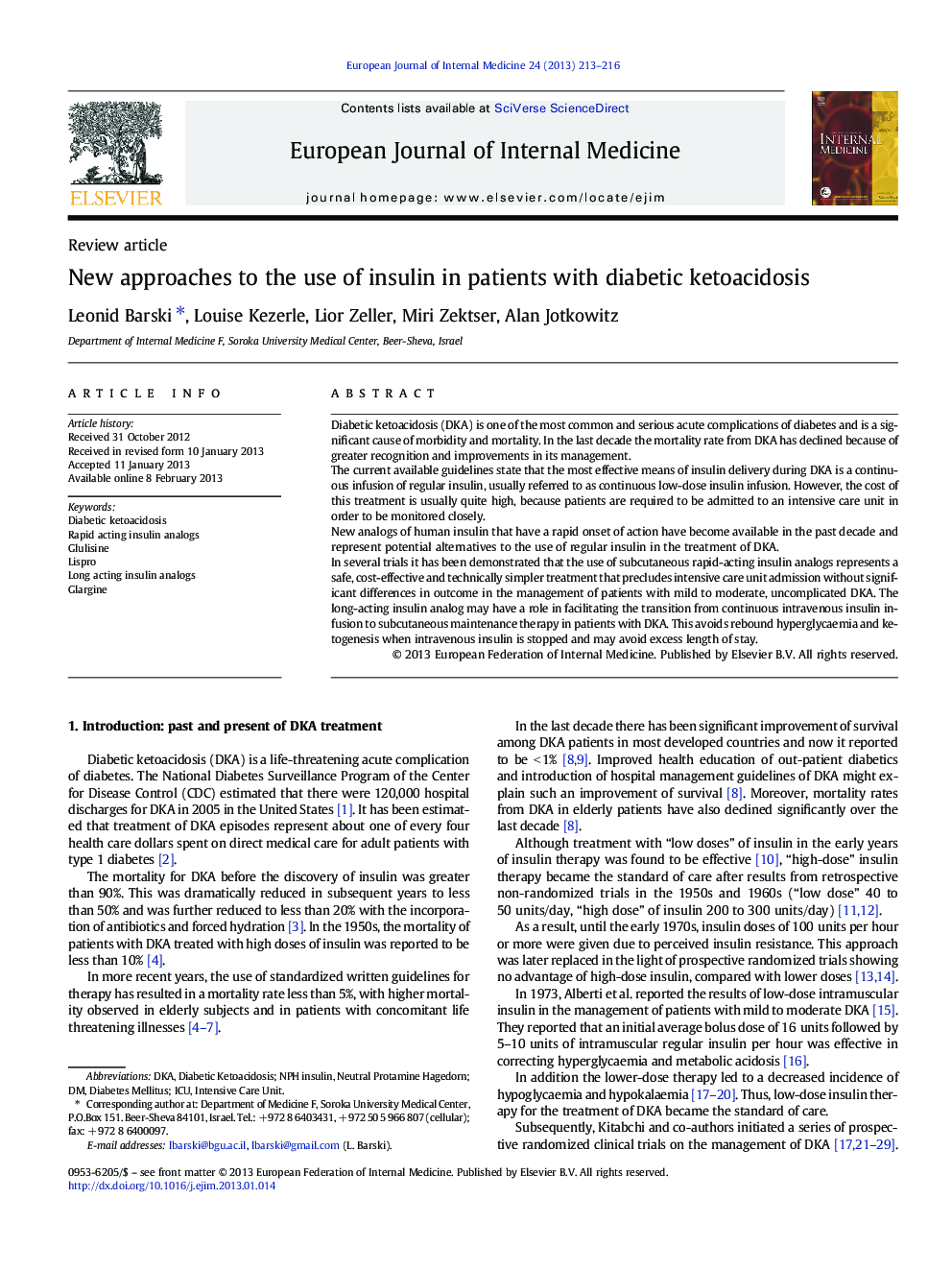| Article ID | Journal | Published Year | Pages | File Type |
|---|---|---|---|---|
| 3466274 | European Journal of Internal Medicine | 2013 | 4 Pages |
Diabetic ketoacidosis (DKA) is one of the most common and serious acute complications of diabetes and is a significant cause of morbidity and mortality. In the last decade the mortality rate from DKA has declined because of greater recognition and improvements in its management.The current available guidelines state that the most effective means of insulin delivery during DKA is a continuous infusion of regular insulin, usually referred to as continuous low-dose insulin infusion. However, the cost of this treatment is usually quite high, because patients are required to be admitted to an intensive care unit in order to be monitored closely.New analogs of human insulin that have a rapid onset of action have become available in the past decade and represent potential alternatives to the use of regular insulin in the treatment of DKA.In several trials it has been demonstrated that the use of subcutaneous rapid-acting insulin analogs represents a safe, cost-effective and technically simpler treatment that precludes intensive care unit admission without significant differences in outcome in the management of patients with mild to moderate, uncomplicated DKA. The long-acting insulin analog may have a role in facilitating the transition from continuous intravenous insulin infusion to subcutaneous maintenance therapy in patients with DKA. This avoids rebound hyperglycaemia and ketogenesis when intravenous insulin is stopped and may avoid excess length of stay.
